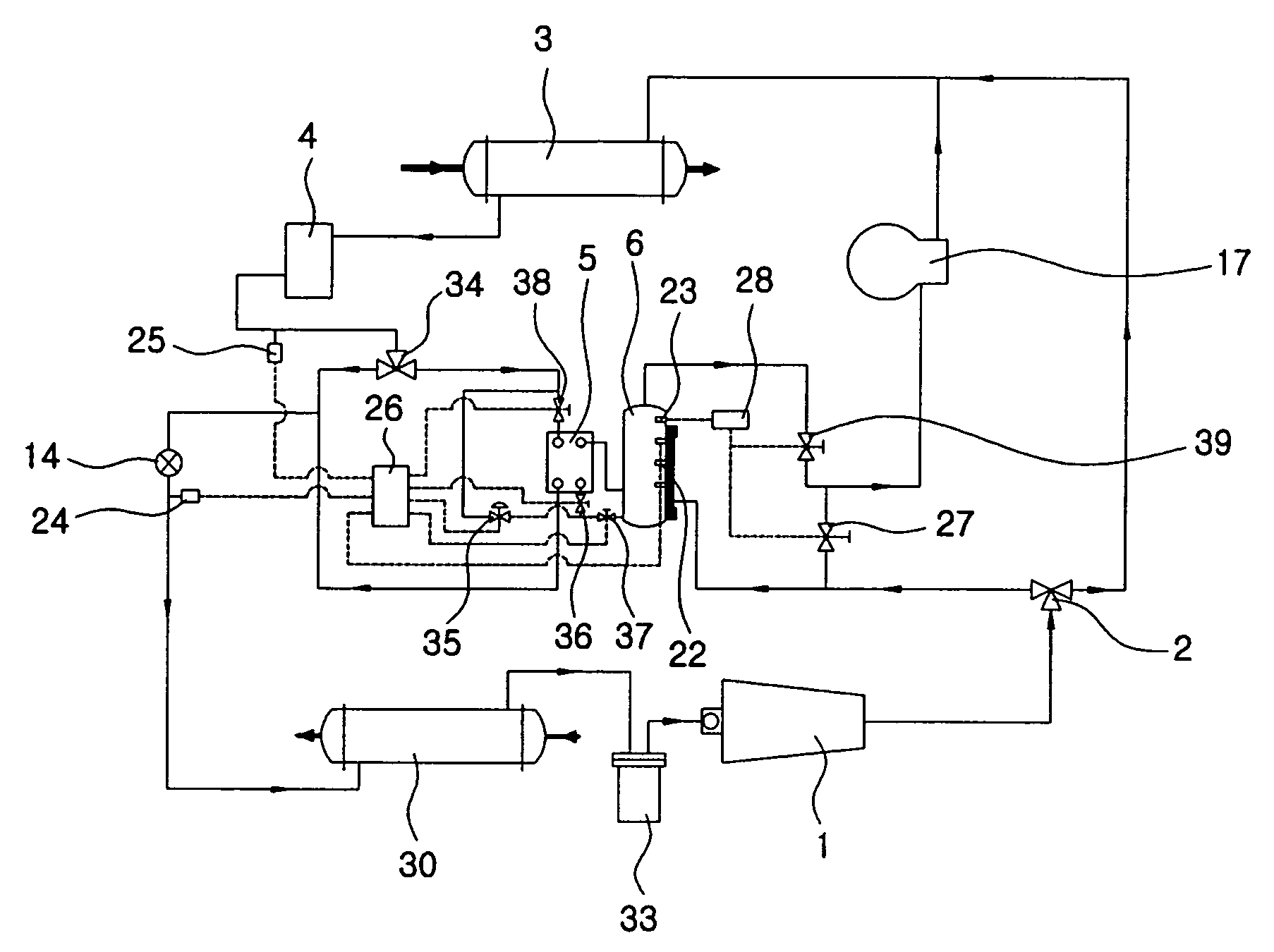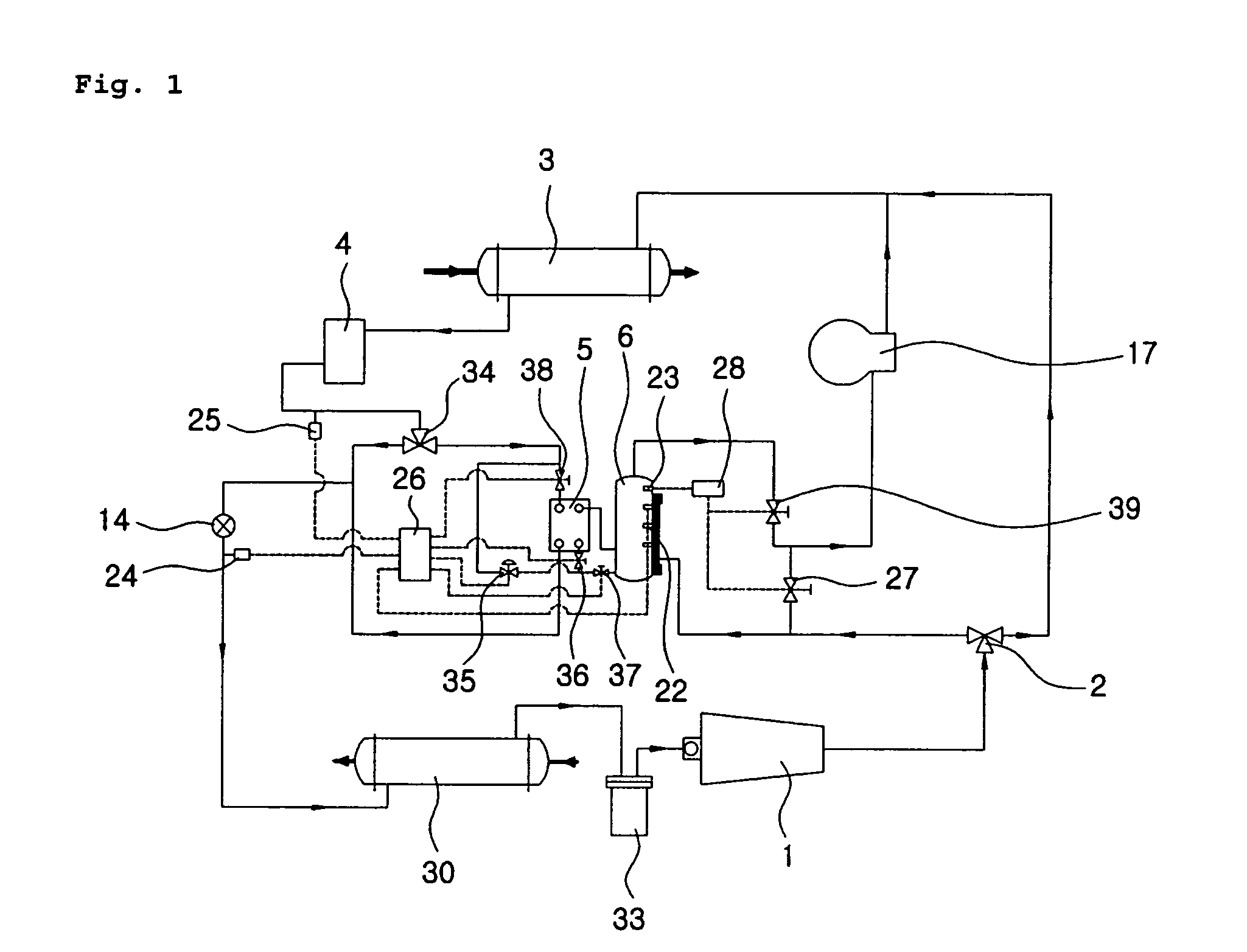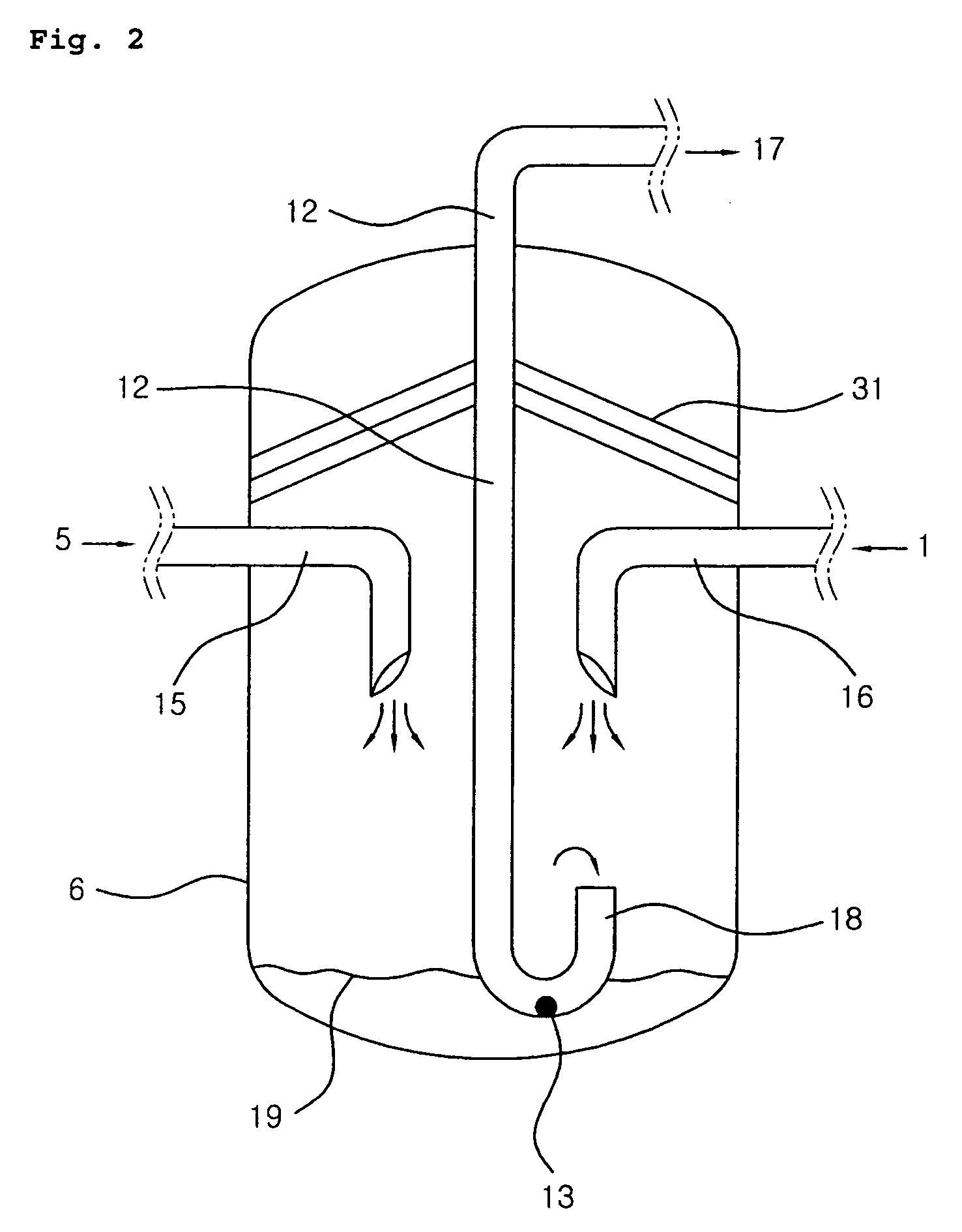Flash tank of two-stage compression heat pump system for heating and cooling
a heat pump system and two-stage technology, applied in the direction of heat pumps, lighting and heating apparatus, machine operation modes, etc., can solve the problems of reducing the heating capacity, heating energy consumption, and reducing the operating efficiency of the compressor
- Summary
- Abstract
- Description
- Claims
- Application Information
AI Technical Summary
Benefits of technology
Problems solved by technology
Method used
Image
Examples
Embodiment Construction
[0019]Preferred embodiments of the invention will be hereafter described in detail, with reference to the accompanying drawings.
[0020]FIG. 1 schematically shows a two-stage compression heat pump system according to an embodiment of the invention, and FIG. 2 schematically shows a flash tank mounted on the two-stage compression heat pump system according to an embodiment of the invention, which will be explained in detail hereafter. A two-stage compression heat pump system equipped with a flash tank according to the invention is a cooling and heating system that performs cooling and heating in a single unit having an intercooler 5 that maximizes cooling effect by increasing the degree of sub-cooling of refrigerant sent to the flash tank 6 and an evaporator. The two-stage compression heat pump system performs a single-stage compression cooling operation in summertime using only a low-stage compressor 1 for stable operations, and uses both the low-stage compressor 1 and a high-stage com...
PUM
 Login to View More
Login to View More Abstract
Description
Claims
Application Information
 Login to View More
Login to View More - R&D
- Intellectual Property
- Life Sciences
- Materials
- Tech Scout
- Unparalleled Data Quality
- Higher Quality Content
- 60% Fewer Hallucinations
Browse by: Latest US Patents, China's latest patents, Technical Efficacy Thesaurus, Application Domain, Technology Topic, Popular Technical Reports.
© 2025 PatSnap. All rights reserved.Legal|Privacy policy|Modern Slavery Act Transparency Statement|Sitemap|About US| Contact US: help@patsnap.com



